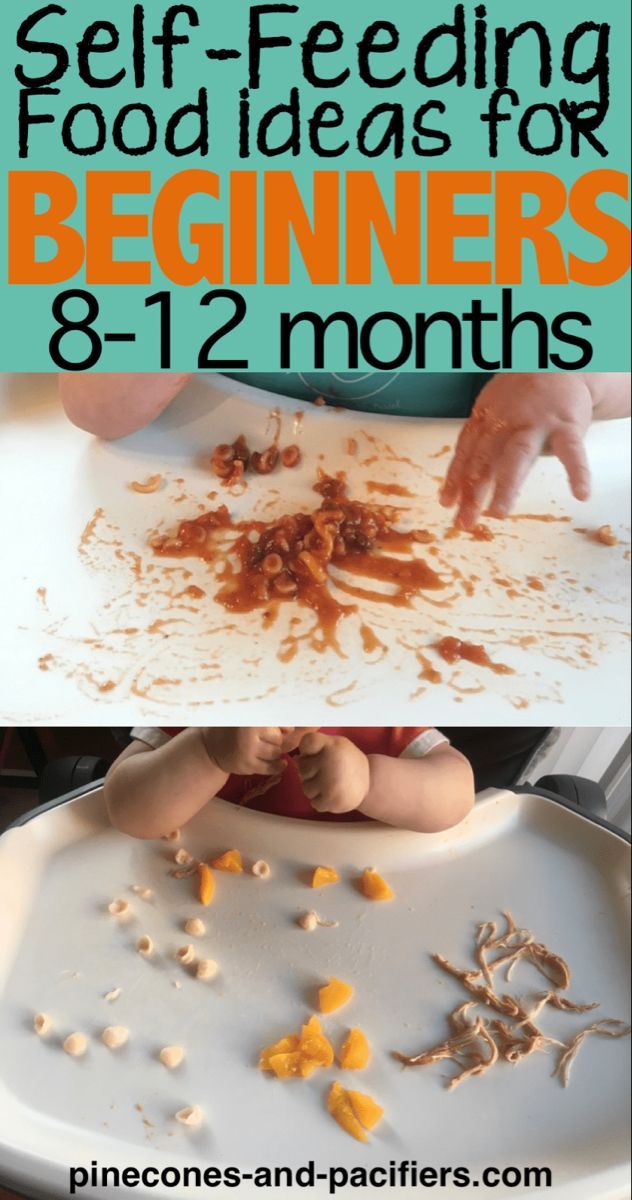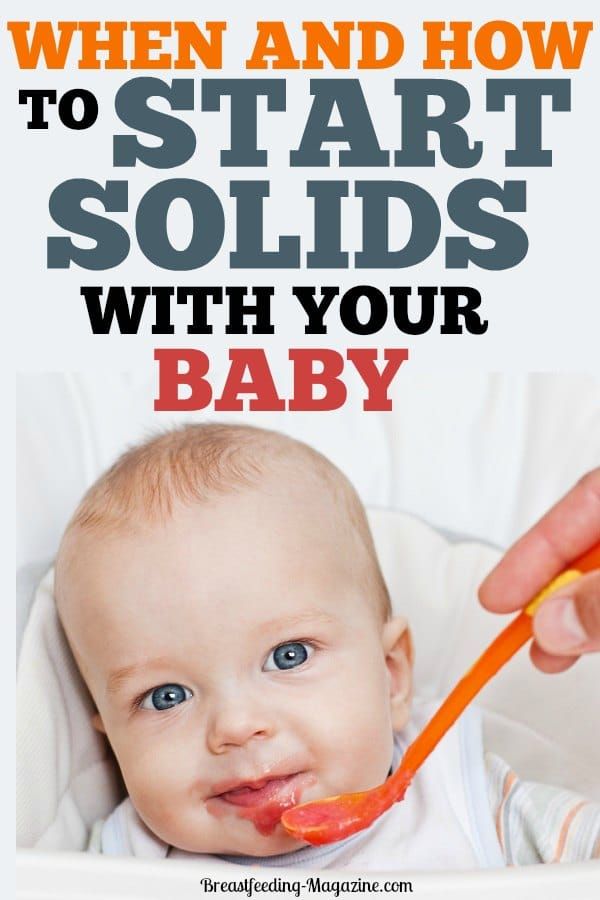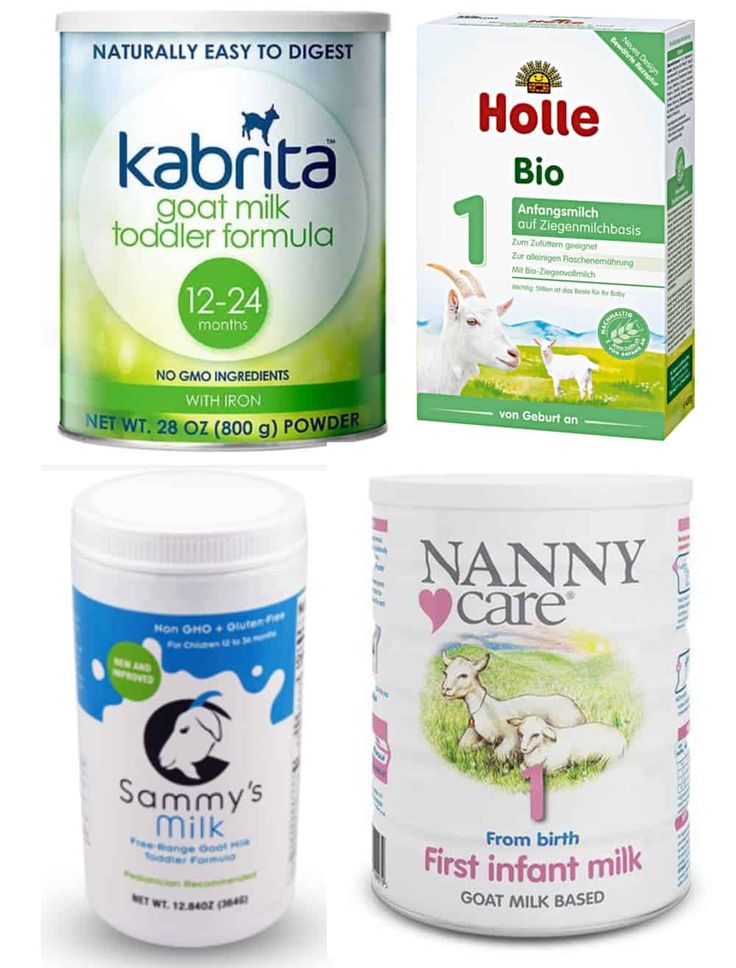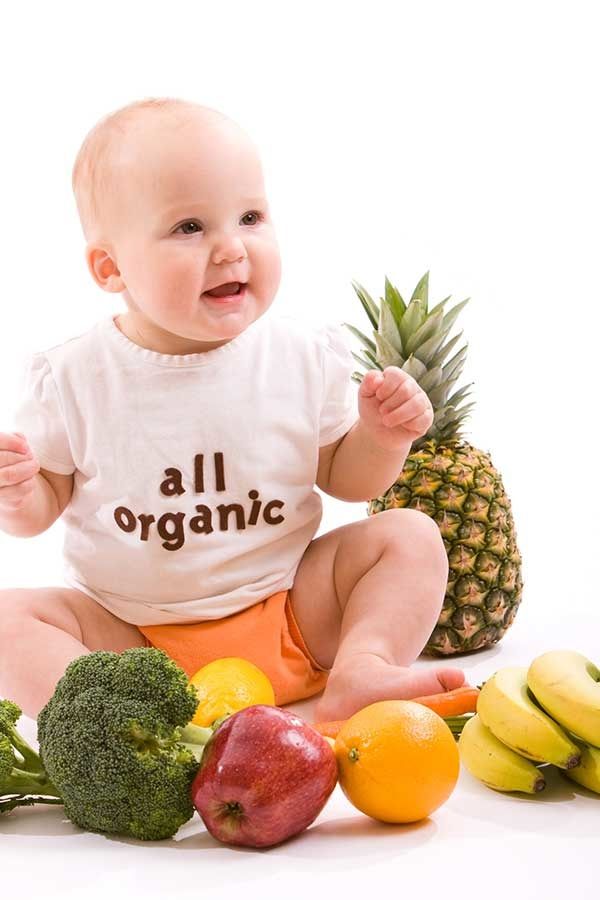Too much solid food baby
Are You Feeding Your Baby Too Much Solid Food?
Last updated: by Emily DeJeu
It’s always nice when a baby who’s just started eating solid foods shows a real appetite for them. As a parent, you know that it feels great to offer your little one healthy purees and then watch as she gobbles them up.
But can that healthy appetite ever be a problem? Can a baby actually eat too much solid food?
In a word, yes.
Remember, for the first year of life, a baby’s primary source of nutrition should be breastmilk and/or formula. It’s just fine to offer solid foods (starting around 5 or 6 months), but solid foods shouldn’t replace breastmilk or formula as a source of nourishment.
In this article, we’ll explore two signs that you may be feeding your baby too much solid food and two easy ways to fix the problem.
2 Signs You’re Feeding Your Baby Too Much Solid Food-
Your baby regularly eats more food than is recommended.
There’s no formula for exactly how much food you should be offering your baby at each meal; rather, its best if you use your baby’s own hunger cues and appetite as a guide.
But if you find that your baby is routinely eating more than is recommended, you may want to consider offering a bit less food at each sitting. A healthy appetite is a good thing, but not if your baby ends up overeating every day! Check out our Amounts of Solid Food By Age chart to determine appropriate serving sizes for your baby.
-
Your baby regularly drinks less breastmilk or formula than is recommended.
This is another sign that you may be offering too much solid food. If you find that your baby is regularly nursing less, or taking less formula during feedings, then you’ll want to take a careful look at how much solid food you’re offering.
Sometimes, babies who fill up on solids don’t have much room left for breastmilk or formula. And since breastmilk and/or formula is a key part of your baby’s nutrition, it’s vital that they drink plenty of it.
 Our Amounts of Solid Food By Age chart (referenced above) also includes recommended amounts of breastmilk and formula; check that to see if your baby’s getting enough.
Our Amounts of Solid Food By Age chart (referenced above) also includes recommended amounts of breastmilk and formula; check that to see if your baby’s getting enough.
Remember, if your baby has a good appetite for solid foods and eats quite a bit, that’s not necessarily a problem; as long as he’s also nursing or formula-feeding well, and taking in the recommended amounts of breastmilk or formula, all is well.
In addition, if you find that your baby isn’t getting the amounts of breastmilk or formula that she needs, it might not be due to her solids intake. If you know that she’s eating normal amounts of solid foods, then you’ll want to think about other reasons that could be causing her to drink less breastmilk or formula (like illness, or teething).
However, if the two signs listed above seem to go hand-in-hand, then you can be pretty certain that you’re feeding your baby more solid food than is good for her, and it’s causing her to take in less breastmilk or formula than she needs.
If you suspect your baby’s consuming too much solid food and not enough breastmilk or formula, there are a two simple steps you can take to fix the situation.
-
Offer breastmilk or formula before offering solids.
This one just makes sense, right? When your baby’s at his hungriest, offer him the breast (or the bottle) before you give him a handful of cheerios or a dish of mashed bananas. That‘ll help ensure that he drinks plenty of breastmilk or formula. It’ll also help take the edge off his appetite for solids.
-
Offer (a little) less solid food.
Some people suggest stopping solids altogether, and going back to a breastmilk/formula only diet. We generally don’t recommend this strategy, since it’s not a good method for striking a balance between solids and breastmilk or formula.
Instead, if you suspect you’re offering too much solid food, we recommend cutting back on serving sizes a bit.
 Simply offer your baby a little less solid food than you normally would. That (in combination with nursing or bottle feeding before you offer solids) should ensure that your baby isn’t eating too much solid food.
Simply offer your baby a little less solid food than you normally would. That (in combination with nursing or bottle feeding before you offer solids) should ensure that your baby isn’t eating too much solid food.
What if you could find everything you needed to know about starting your baby on solid foods – when it’s best to start solids, how to introduce solids, complications, food allergies, etc. – in one easy-reference guide? Now you can! Your Baby’s Start To Solid Foods: A Comprehensive Guide will walk you through every step of starting solids. Plus, your e-Book package includes several bonus materials, designed to maximize your success in starting solids. You’ll get a thorough guide to treating constipation, a dietitian’s advice on how to avoid 5 common solid-foods mistakes, and a weekly meal plan for your baby’s first year. Grab your e-Book today, and ensure your baby has the healthiest possible start to solid foods!
Grab your e-Book today, and ensure your baby has the healthiest possible start to solid foods!
Was your baby a big solids eater? How did you strike a balance between solid food and breastmilk/formula? Share your tips below!
Categories baby-solid-foods-complications, Breastfeeding Tags babies solid food, baby feeding schedule, feeding baby solid foods, feeding baby solids, feeding chart for babies, how much to feed baby, infant feeding schedule, introducing solid foods, introducing solids, solid food feeding schedule, solid foods for babies, solids feeding schedule, starting babies on solids, starting baby on solids, when to feed baby solidsThe Baby Sleep Site® is a participant in the Amazon Services LLC Associates Program and other product affiliate programs. If you click on a product link and make a purchase, The Baby Sleep Site® may (but not always) receive a small commission from the company selling the product, but will not affect your purchase price. We only recommend products that we believe are quality products and are good for our readers.
Holistic Sleep Solutions from The Baby Sleep Site
®Do-It-Yourself: Just getting started with your research but you want to stop Googling? Choose from any of our e-Book bundles for practical advice you can put to use TODAY!
Do-It-Mostly-Yourself: Would you like to continue learning with the option of chatting with a sleep consultant? We have a perfect solution! Become a VIP Member for access to all of our premium content, “ask the author,” audio courses, live weekly chat, and more!
Work With a Sleep Expert: Tap into over a decade of experience with thousands of families before you! Get a Personalized Sleep Plan® just for your unique situation, get guidance and answers to all your “what if?” questions while you work through your plan, and benefit from expert support along the way. We can’t tell you how many times we’ve heard “I wish I had done this sooner!” Not sure? Read these stories from well-rested parents.
Don’t lose another wink of sleep — GET STARTED TODAY with our gentler, kinder approach to healthy sleep!
Since starting in 2008, we’ve gained over 10,000 comments on our blog!
At this time, we’ve turned the comment sections off. We would, of course, love to hear from you! For help with your specific sleep problems, please learn more about our DIY resources or our sleep consultation services. Or, consider emailing us for a fast and helpful response!
FREE Guide: Five Ways To Help Your Child Sleep Through the Night
Join over 450,000 parents around the world & sign up today to receive the guide and our Baby Sleep Newsletter absolutely FREE!
Download FREE Guide Today!
Is It Possible to Overfeed My Baby?
Learn to read your baby's cues and pay attention to the recommended number of servings of food from the major food groups a baby needs in a day
When your baby was on formula or breast milk, the advice was to feed him on demand and stop when he showed signs of fullness. You were unlikely to overfeed your baby if you listened to his cues.
You were unlikely to overfeed your baby if you listened to his cues.
But what happens when your baby starts eating solid food: is it possible to overfeed him? The short answer is: yes, if you ignore his cues and are not offering the right foods.
Here’s some advice on how to prevent overfeeding your baby:
- Look out for cues and stop feeding your baby when he is full.
- Feed your baby solids on schedule, not on demand.
- Know what baby should be eating and the recommended portion sizes
Related: Help Your Baby Develop
1. Look Out for Cues and Stop Feeding When Baby's Full
Your little one will know how much food he wants. Do not force your child to eat if he is not hungry or interested—he does not need to finish everything on the plate. Offer smaller portions of healthy food and let him choose how much to eat.
Don’t worry, your baby will eat up during the next meal if he is hungry, or ask for milk if he is still in the weaning stage.
Signs your baby is full
- Turning his face away
- Shaking his head
- Closing his mouth or refusing to open it when you offer food
- Spitting out food
- Appearing uninterested or distracted
Related: Nutrition for Your Toddler
2. Eat on Schedule, Not on Demand
Have a meal schedule for your baby once he’s started on solids. Set a time for breakfast, lunch, dinner, and snacks and let your baby get used to the routine.
When you’re just introducing your little one to solids, you will still need to offer the bottle or breast on demand, but once you have made a complete switch to solids, stick to this schedule.
Related: Getting Ready for Solids
3. Know What Baby Should Be Eating and the Recommended Portion Sizes
For your toddler to obtain all the nutrients he needs, feed him a variety of food from the four main food groups in the correct portions.
Below is a guide to the food groups and how much of each your baby should be eating in a day.
Children 1 to 2 years old
Food groups | Recommended number of servings per day |
Brown rice and wholemeal bread | 2 — 3 |
Fruit | ½ — 1 |
Vegetables | ½ |
Meat & Others | ½ |
Fruit should not be used to replace vegetables in the diet or vice versa because they contain different types of nutrients.
For more information on what 1 serving of each food group means and sample daily meal plans, read Early Nutrition for Babies.
Remember, these are only recommendations—listen to your baby’s cues and you are likely to be on the right track. Good job, mummy and daddy!
Good job, mummy and daddy!
Visit Parent Hub, for more useful tips and guides to give your baby a healthy start.
Download the HealthHub app on Google Play or Apple Store to access more health and wellness advice at your fingertips.
Read these next:
- Baby's First Food Journey
- Early Childhood Nutrition
- Getting Your Baby Started on Solids
- Things New Dads Need to Know
This article was last reviewed on Tuesday, November 15, 2022
Catalog-Item Reuse
Learn to read your baby's cues and pay attention to the recommended number of servings of food from the major food groups a baby needs in a day
<div><div><p>When your baby was on formula or breast milk, the advice was to feed him on demand and stop when he showed signs of fullness. You were unlikely to overfeed your baby if you listened to his cues.</p><p>But what happens when your baby starts eating solid food: is it possible to overfeed him? The short answer is: yes, if you ignore his cues and are not offering the right foods.</p><p>Here’s some advice on how to prevent overfeeding your baby:
You were unlikely to overfeed your baby if you listened to his cues.</p><p>But what happens when your baby starts eating solid food: is it possible to overfeed him? The short answer is: yes, if you ignore his cues and are not offering the right foods.</p><p>Here’s some advice on how to prevent overfeeding your baby:
</p><ol><li>Look out for cues and stop feeding your baby when he is full.</li><li>Feed your baby solids on schedule, not on demand.</li><li>Know what baby should be eating and the recommended portion sizes</li></ol><p></p><p>
<strong>Related:
<a href="https://www.healthhub.sg/live-healthy/1198/baby-help-your-baby-develop" title="Help Your Baby Develop">Help Your Baby Develop</a></strong></p></div><div><h3>1. Look Out for Cues and Stop Feeding When Baby's Full</h3><p>Your little one will know how much food he wants. Do not force your child to eat if he is not hungry or interested—he does not need to finish everything on the plate. Offer smaller portions of healthy food and let him choose how much to eat.</p><p>Don’t worry, your baby will eat up during the next meal if he is hungry, or ask for milk if he is still in the weaning stage.</p><h4>Signs your baby is full</h4><ul><li>Turning his face away</li><li>Shaking his head</li><li>Closing his mouth or refusing to open it when you offer food</li><li>Spitting out food</li><li>Appearing uninterested or distracted</li></ul><p>
Do not force your child to eat if he is not hungry or interested—he does not need to finish everything on the plate. Offer smaller portions of healthy food and let him choose how much to eat.</p><p>Don’t worry, your baby will eat up during the next meal if he is hungry, or ask for milk if he is still in the weaning stage.</p><h4>Signs your baby is full</h4><ul><li>Turning his face away</li><li>Shaking his head</li><li>Closing his mouth or refusing to open it when you offer food</li><li>Spitting out food</li><li>Appearing uninterested or distracted</li></ul><p>
<strong>Related:
<a href="https://www.healthhub.sg/live-healthy/1243/baby-nutrition-for-your-toddler" title="Nutrition for Your Toddler">Nutrition for Your Toddler</a></strong></p></div><div><h3>2. Eat on Schedule, Not on Demand</h3><p>Have a meal schedule for your baby once he’s started on solids. Set a time for breakfast, lunch, dinner, and snacks and let your baby get used to the routine.</p><p>When you’re just introducing your little one to solids, you will still need to offer the bottle or breast on demand, but once you have made a complete switch to solids, stick to this schedule.</p><p>
Set a time for breakfast, lunch, dinner, and snacks and let your baby get used to the routine.</p><p>When you’re just introducing your little one to solids, you will still need to offer the bottle or breast on demand, but once you have made a complete switch to solids, stick to this schedule.</p><p>
<strong>Related:
<a href="https://www.healthhub.sg/live-healthy/1227/baby-getting-ready-for-solids" title="Getting Ready for Solids">Getting Ready for Solids</a></strong></p></div><div><h3>3. Know What Baby Should Be Eating and the Recommended Portion Sizes</h3><p>For your toddler to obtain all the nutrients he needs, feed him a variety of food from the four main food groups in the correct portions.</p><p>Below is a guide to the food groups and how much of each your baby should be eating in a day.</p><h4>Children 1 to 2 years old</h4><div><table cellspacing="0"><tbody><tr><td><p>
<strong> Food groups</strong></p></td><td><p>
<strong> Recommended number of servings per day</strong></p></td></tr><tr><td><p>Brown rice and wholemeal bread</p></td><td><p>2 — 3</p></td></tr><tr><td><p>Fruit</p></td><td><p>
<span lang="EN-US">½ </span><span></span>— 1</p></td></tr><tr><td><p>Vegetables</p></td><td><p>
<span lang="EN-US">½</span><span></span></p></td></tr><tr><td><p>Meat & Others
</p></td><td><p>
<span>½</span></p></td></tr><tr><td rowspan="1">Dairy
</td><td rowspan="1">1 <span lang="EN-US">½</span>
</td></tr></tbody></table></div></div><p>
</p><p>Fruit should not be used to replace vegetables in the diet or vice versa because they contain different types of nutrients. </p><p>For more information on what 1 serving of each food group means and sample daily meal plans, read
</p><p>For more information on what 1 serving of each food group means and sample daily meal plans, read
<a href="https://www.healthhub.sg/programmes/122/early-nutrition-for-babies#1year-above" title="Early Nutrition for Babies">Early Nutrition for Babies</a>.</p><p>Remember, these are only recommendations—listen to your baby’s cues and you are likely to be on the right track. Good job, mummy and daddy!
</p><p><a href="https://www.healthhub.sg/programmes/183/parent-hub/baby-toddler/childhood-healthy-diet">Visit Parent Hub, for more useful tips and guides to give your baby a healthy start.</a></p><p><em>Download the HealthHub app on
<a href="https://play.google.com/store/apps/details?id=sg.gov.hpb.healthhub&hl=en_SG" target="_blank" rel="nofollow">Google Play</a> or
<a href="https://itunes.apple.com/sg/app/healthhub-sg/id1034200875?mt=8" target="_blank" rel="nofollow">Apple Store</a> to access more health and wellness advice at your fingertips. </em>
</em>
</p>
<hr /><p>
<strong>Read these next:</strong></p><ul><li>
<a href="https://www.healthhub.sg/live-healthy/156/babys_first_food_journey" title="Baby's First Food Journey">Baby's First Food Journey</a></li><li>
<a href="https://www.healthhub.sg/programmes/122/early-nutrition-for-babies" title="Early Childhood Nutrition">Early Childhood Nutrition</a></li><li>
<a href="https://www.healthhub.sg/live-healthy/2020/getting-baby-started-on-solids" title="Getting Your Baby Started on Solids">Getting Your Baby Started on Solids</a> </li><li>
<a href="https://www.healthhub.sg/live-healthy/1579/things-new-dads-need-to-know" title="Things New Dads Need to Know">Things New Dads Need to Know</a></li></ul>
</div>
Tuesday, September 4, 2018
Thursday, December 13, 2018
No
1945
Tuesday, November 15, 2022
<div>Health Promotion Board </div>
/sites/assets/Assets/Logos%20and%20Official/HPB%20CMYK%20Logo%20Padded. jpg
jpg
Health Promotion Board
https://www.hpb.gov.sg
Q&A: Is It Possible to Overfeed My Baby?
Articles
3 questions about eating disorders in children – nakedheart.online
How can eating disorders and dealing with these disorders be related to applied behavior analysis?
To date, approaches based on the ideas of behavioral analysis are the only ones that have empirical evidence. The fact that a child, for example, is underweight, does not take any food and is fed through a gastrostomy, in no case can dictate the choice of a support program. It is also important to understand that a program of assistance that is effective for one child may even be harmful for another. Therefore, it is always necessary to evaluate specific manifestations of behavior in a particular child. For years, we've been trying to figure out what keeps undesirable eating behaviors going. Functional analysis allows you to see that the caring adult during feeding, when undesirable behavior occurs, takes breaks, gives the child attention, preferred food, toys. Most often, undesirable eating behavior is reinforced by the ability to avoid eating. That is, unwanted behavior is maintained through negative reinforcement. This means that the child does everything just to avoid the process of eating. Therefore, when we build a program of assistance, our goal is to break the causal relationship between unwanted behavior and the possibility of avoiding feeding. In applied behavior analysis, this procedure is called avoidance suppression. In other words, we try to ignore the child's food refusal behavior. And in addition to not providing additional attention in response to unwanted behavior, we continue to offer food to the child.
Therefore, it is always necessary to evaluate specific manifestations of behavior in a particular child. For years, we've been trying to figure out what keeps undesirable eating behaviors going. Functional analysis allows you to see that the caring adult during feeding, when undesirable behavior occurs, takes breaks, gives the child attention, preferred food, toys. Most often, undesirable eating behavior is reinforced by the ability to avoid eating. That is, unwanted behavior is maintained through negative reinforcement. This means that the child does everything just to avoid the process of eating. Therefore, when we build a program of assistance, our goal is to break the causal relationship between unwanted behavior and the possibility of avoiding feeding. In applied behavior analysis, this procedure is called avoidance suppression. In other words, we try to ignore the child's food refusal behavior. And in addition to not providing additional attention in response to unwanted behavior, we continue to offer food to the child. This is a complex process, and we see a lot of unwanted behavior at first, but that's why we use another procedure in parallel - differential reinforcement. That is, if the child agreed to take food in his mouth, he receives a large amount of attention, preferred objects or food, or a short break. We reinforce this behavior because we want to see more of it in the future. Also, when talking about behavioral approaches, we need to think about the manipulation of antecedent events: at first we lower the level of requirements to make it easier for the child, and this reduces the motivation to resort to undesirable behavior during meals. For example, we offer a very small amount of food. We never start a relief program with a full plate of food. We also often simplify food texture requirements and start with puree so that the child can taste and swallow quickly. As behavioral specialists, we set individual, observable and measurable goals, for example: increase the number of foods a child eats from 8 to 19 in a month.
This is a complex process, and we see a lot of unwanted behavior at first, but that's why we use another procedure in parallel - differential reinforcement. That is, if the child agreed to take food in his mouth, he receives a large amount of attention, preferred objects or food, or a short break. We reinforce this behavior because we want to see more of it in the future. Also, when talking about behavioral approaches, we need to think about the manipulation of antecedent events: at first we lower the level of requirements to make it easier for the child, and this reduces the motivation to resort to undesirable behavior during meals. For example, we offer a very small amount of food. We never start a relief program with a full plate of food. We also often simplify food texture requirements and start with puree so that the child can taste and swallow quickly. As behavioral specialists, we set individual, observable and measurable goals, for example: increase the number of foods a child eats from 8 to 19 in a month. Or the child takes 80% of the total number of meals offered to him.
Or the child takes 80% of the total number of meals offered to him.
We also think a lot about structuring the eating process so that the environment in which the child eats is as predictable and understandable as possible. Structuring the feeding process not only reduces the likelihood of undesirable behavior, but also allows for a better evaluation of the behavior and the effectiveness of the assistance program. We collect data, build graphs and, based on them, make clinical decisions.
Puree again? What to do if the child eats only crushed food
Home
\
Ekaterina Maslova
\
Puree again? What to do if the child eats only crushed food
\
Ekaterina Maslova
Nutritionist
all expert articles
{{text}}
Puree again? What to do if the child eats only crushed food
A variety of mashed potatoes and pureed mother's soups are adored even by grown-up kids: the usual taste, a long-familiar texture that is so easy to swallow. Why waste time chewing when food can be so convenient? But mom likes it less and less: she’s fed up with grinding each serving with a blender, the pediatrician insists that it’s time to switch to solid food, and in general it’s not clear why the child refuses to eat in pieces? How to overcome the baby's fear of "adult" dishes and teach him to chew - in our article.
Why waste time chewing when food can be so convenient? But mom likes it less and less: she’s fed up with grinding each serving with a blender, the pediatrician insists that it’s time to switch to solid food, and in general it’s not clear why the child refuses to eat in pieces? How to overcome the baby's fear of "adult" dishes and teach him to chew - in our article.
Are you in a hurry?
Experts from the UNICEF European Bureau say that by the age of two, a child can already chew the same food as adult family members. But the terms are rather arbitrary: someone can quite cope with the pieces by the age of one, while for other kids the development of the skill is delayed. Everything is very individual, so take a closer look at your baby, his skills and habits. Try to understand if he is ready for solid food, and if so, what prevents him from starting to chew? If you can't figure it out, seek help from a pediatrician, nutritionist, or pediatric nutritionist.
Say "ah-ah-ah-ah!"
Sometimes it can be painful for a baby to chew or swallow. Discomfort and pain cause wounds from stomatitis, swollen gums during teething, early caries. Monitor the condition of the oral cavity and teeth, and if you notice a problem, make an appointment with the dentist.
And it's hard for mom
Perhaps the mother does not know when the baby can start eating from the common table. Or she is just comfortable feeding him mashed potatoes from jars, because cooking takes a lot of time. It happens that switching to solid food is simply scary: friends had a negative experience or someone shared their failures on social networks. Sometimes, in order for a mother to decide to give food in pieces, a simple support from relatives, help during cooking and feeding is enough. You may need to consult a pediatrician or psychologist - they can help mom overcome doubts.
Not a race, but a marathon
Quickly accustom the child to the pieces will not work. He must mature for this, get used to new sensations. Equally important is the readiness of the body to chew solid food: the number of teeth, the development of chewing skills. Sometimes time is all a little foodie needs. Don't rush it!
He must mature for this, get used to new sensations. Equally important is the readiness of the body to chew solid food: the number of teeth, the development of chewing skills. Sometimes time is all a little foodie needs. Don't rush it!
You need to move smoothly to eating in pieces. To begin with, every few days, instead of mashed potatoes, offer your baby a finely chopped dish, crushed to grains. When the child gets used to it, leave a few small pieces in the serving, and then gradually increase their size and quantity.
Food not fun
Under TV or a fairy tale, a baby can even eat unloved food. But there is little benefit from it, and the skill of chewing solid food does not develop: the child mechanically swallows food. Do not distract him with video and audio while eating, do not form unhealthy habits.
Many children are not ready for the simultaneous change in both the taste and the consistency of the product. To reduce the likelihood of another “I won’t!”, You can (still calmly and regularly) offer the child to replace the familiar cottage cheese, for example Rastishka with strawberries for Rastishka with strawberries, banana and cookies.










